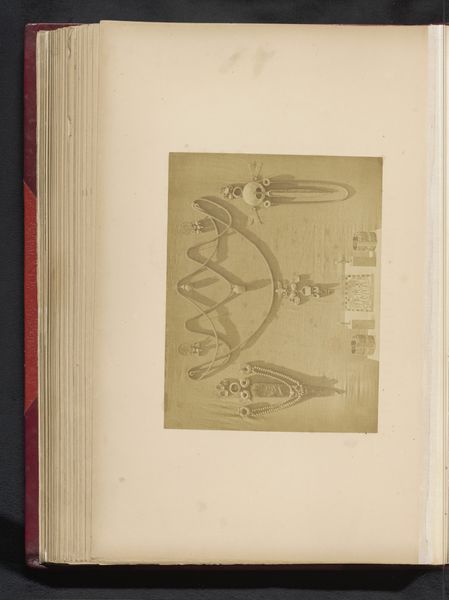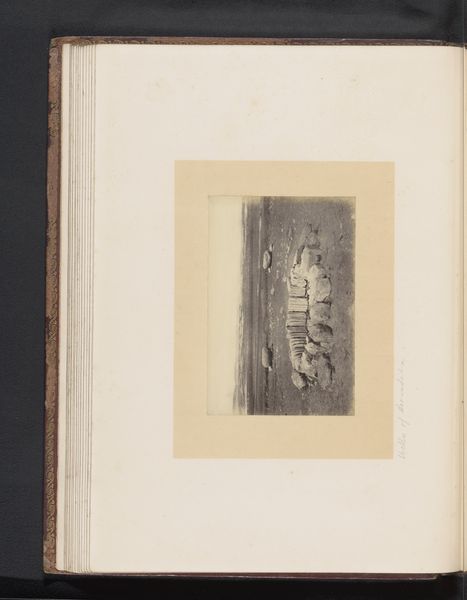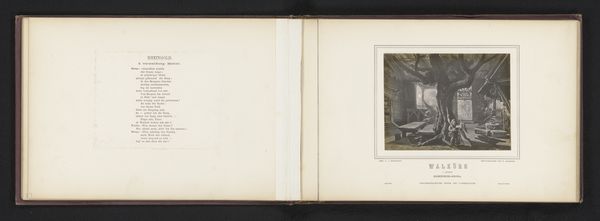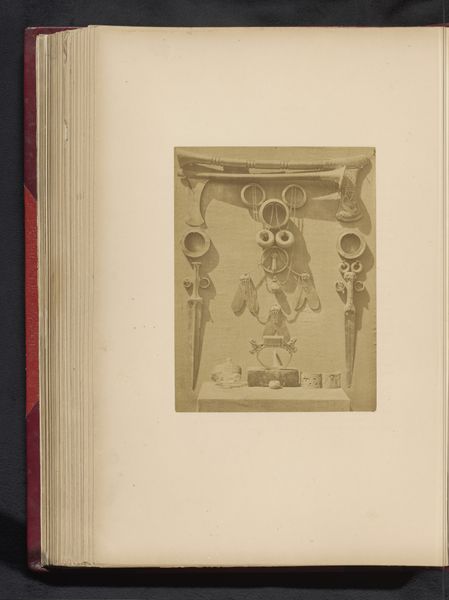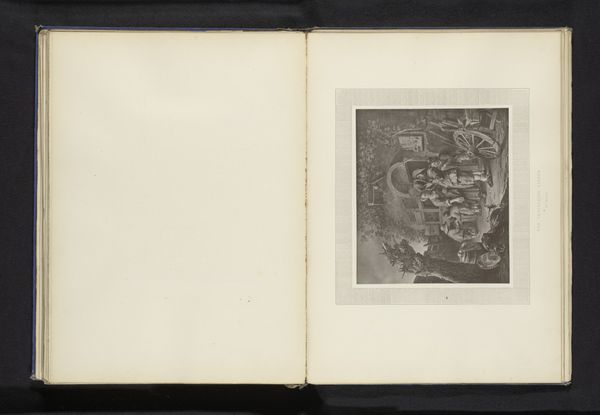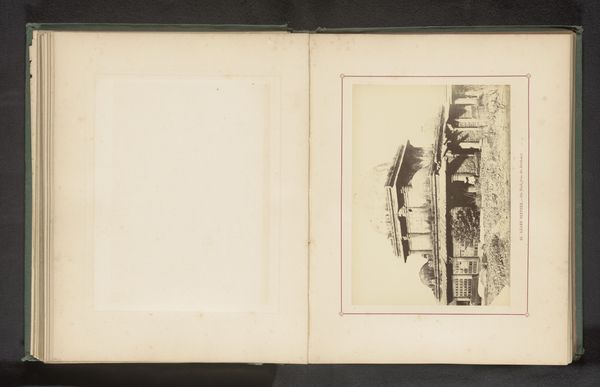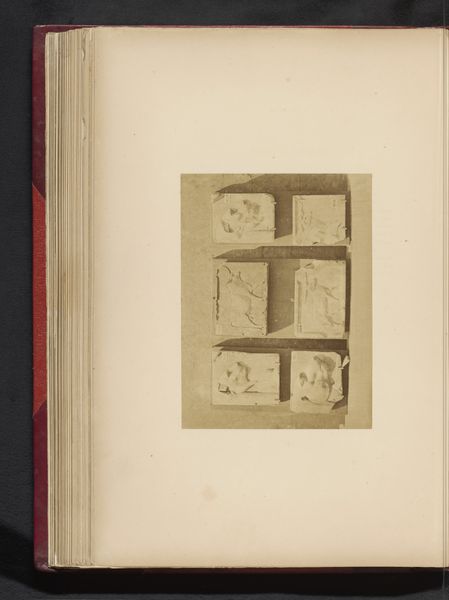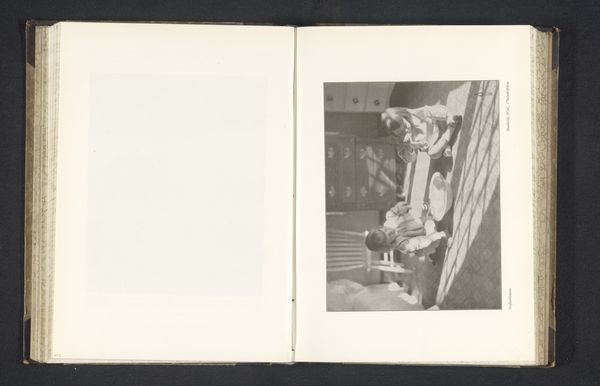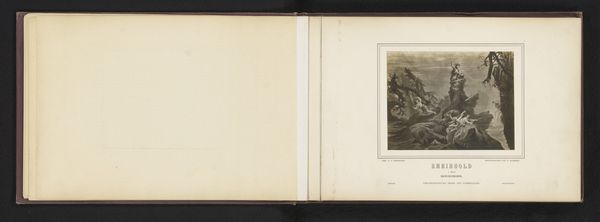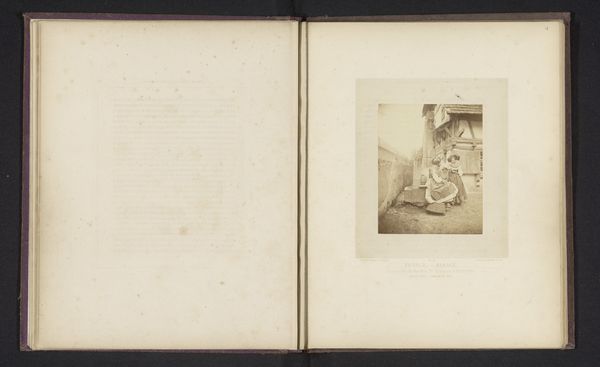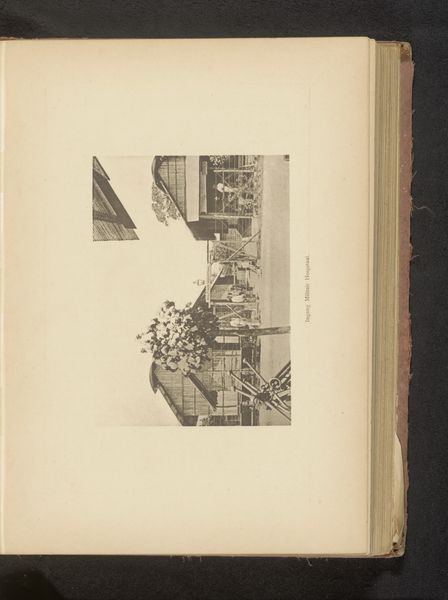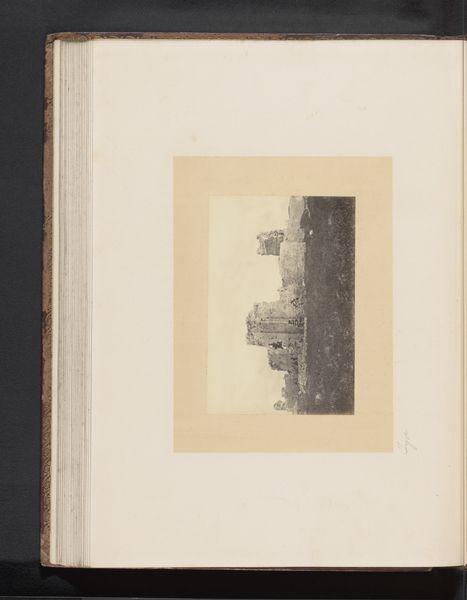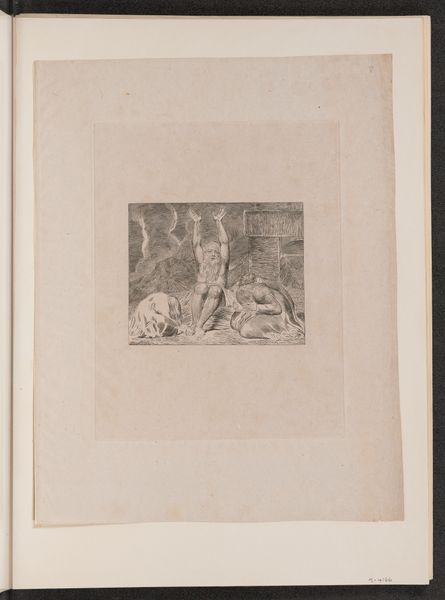
Objecten opgegraven in Drah Abu'l Neggah bij Thebe, opgesteld in het Boulaq Museum in Caïro, Egypte before 1871
0:00
0:00
drawing, print, paper, ink
#
drawing
# print
#
ancient-egyptian-art
#
paper
#
ink
#
ancient-mediterranean
Dimensions: height 177 mm, width 251 mm
Copyright: Rijks Museum: Open Domain
Curator: Look at this compelling print! It's entitled "Objects unearthed in Drah Abu'l Neggah near Thebes, arranged in the Boulaq Museum in Cairo, Egypt", created before 1871 by Hippolyte Délié. What’s your initial reaction? Editor: What a jumble! It's fascinatingly chaotic – feels like an archeological fever dream rendered in sepia tones, an overwhelming amount of human production. There are these strange wooden frameworks all over, and various other artefacts scattered and propped in ways that imply there has been a long period of time. Curator: Exactly! Délié, in his depiction, freezes a moment in the ongoing, often destructive, history of archaeological discovery. The artist captures what I consider the vulnerable, almost melancholic nature of these ancient relics freshly pulled from the earth. You have things displayed seemingly without arrangement next to opened burial chambers that give us only dark void in return. Editor: But let’s not overlook the labor that goes into excavation! The materials used to create this image – the paper, the ink – those had to be sourced and combined. What’s really on display is the colonial enterprise of the era, literally arranging and claiming ownership through documentation. The frameworks almost cage the objects. Curator: That's a potent point, these skeletal frames giving order and classification. Yet, for me, I see something deeper, beyond its physical capture. Délié’s delicate rendering invites a conversation with the ghosts of the past. The way the ink delicately graces the page feels like the whispers of the artisans themselves. Editor: Those artisans, who were they? Where did their materials come from? It's important to view them as producers within complex systems. Curator: A worthy endeavor indeed, but beyond process and production is a space for imagination! Seeing the ghostly remains, one cannot help to consider the vast timeframes here, and wonder what might remain to tell stories of our era in millennia hence? Editor: Maybe only our landfills! It puts things into a harsh perspective. Curator: Exactly! Perhaps this haunting composition invites us to consider exactly that.
Comments
No comments
Be the first to comment and join the conversation on the ultimate creative platform.
